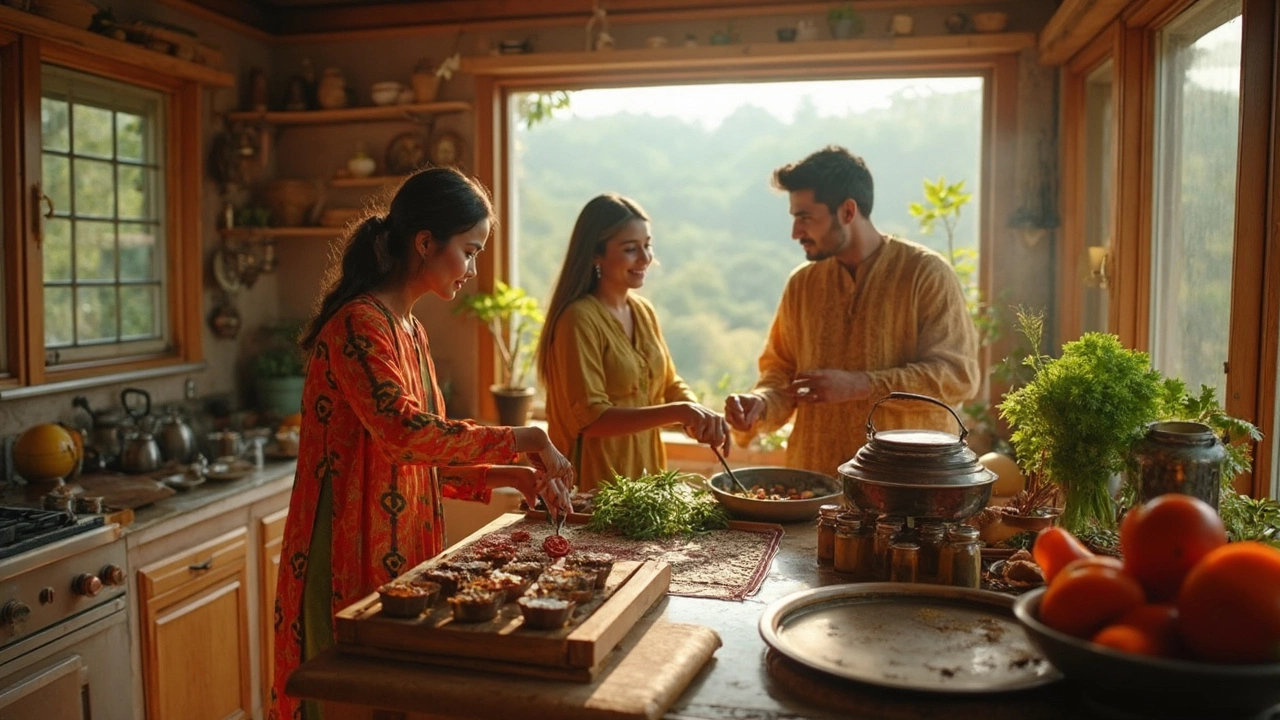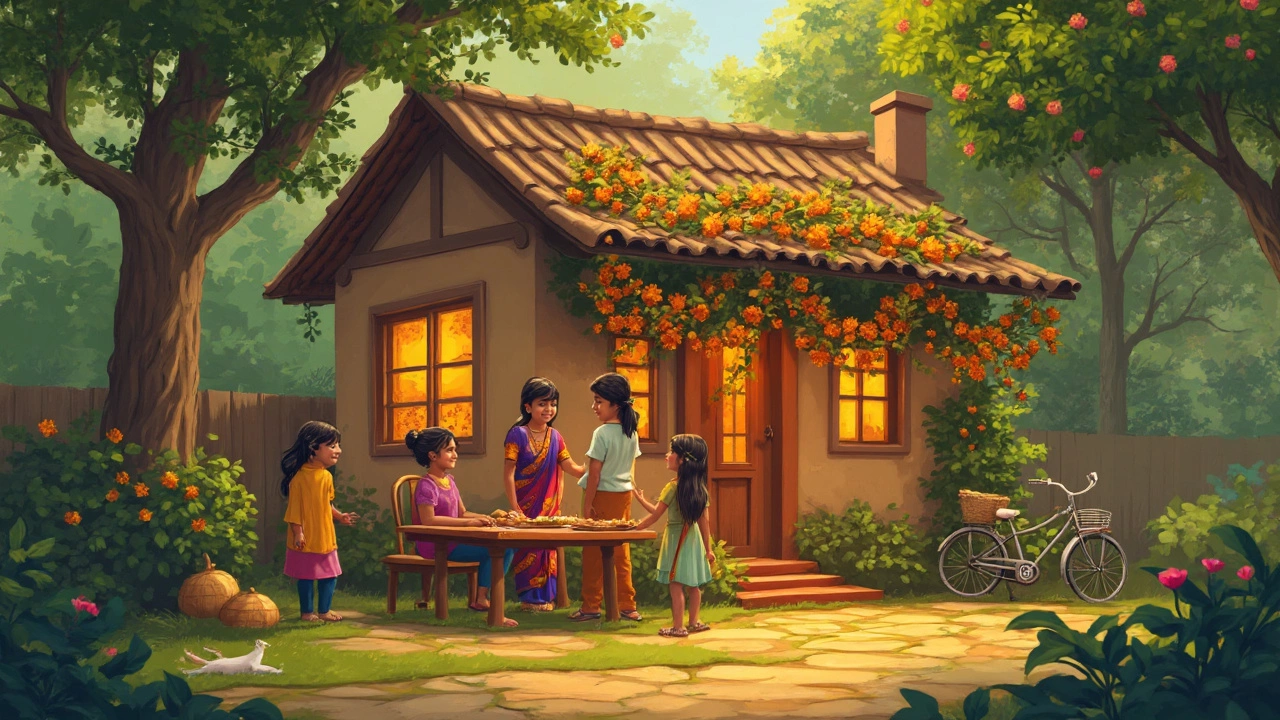If you’ve ever dreamt of swapping the formality of hotels for a homey adventure, self-catering cottages might be your best kept travel secret. Some folks say the biggest luxury is freedom—freedom to sleep in, cook your favorites, or watch the sunrise in your pajamas with no one watching. Self-catering cottages hand you the keys to exactly that. They’re transforming how families, couples, and even solo wanderers travel, shifting the lens away from strict routines and towards experiences that feel personal, private, and way more relaxed. No fancy room service menus. No knocking at your door for daily cleaning. Just you, your loved ones, and the world outside your (temporary) front door.
What Are Self-Catering Cottages?
The term "self-catering" sometimes throws people off, especially if you haven’t traveled much in the UK or Europe. At its core, it just means you're responsible for your own meals and living routines during your stay—think of it as bringing your own lifestyle with you on holiday. Self-catering cottages are private homes, bungalows, village hideaways, or sometimes even quirky former barns or lighthouses repurposed as guest accommodation. Unlike traditional hotels with daily housekeeping services, on-site restaurants, or busy lobbies, these cottages offer everything you’d expect in a home: a fully-equipped kitchen, bedrooms, a living space, and often private outdoor areas.
The main draw? Flexibility. Want to sleep in till noon without missing breakfast? No problem. Fancy a midnight snack or a picnic in the garden? Go for it. Rowan, my ten-year-old, loves that he can have cereal for dinner if he feels like it. With a self-catering cottage, you dictate the schedule and atmosphere. You walk into a space that almost instantly feels like your own. If you enjoy the idea of home comforts while exploring a new area, this kind of setup is hard to beat.
Self-catering accommodation became especially popular in the last decade, partly because of how travelers now value privacy and personalized journeys. It’s no coincidence that websites like Airbnb and Vrbo boomed, but even before them, British holiday-goers have long flocked to classic countryside cottages for extended breaks. So, while there’s fresh buzz around “living like a local” on holiday, the roots of self-catering experiences actually stretch way back.
The range of cottages out there is huge. You’ll find rustic stone houses in Cornwall, sleek cabins in the Scottish Highlands, or even quirky houseboats along the Thames. Some cottages are centuries old with thatched roofs and wood-fired stoves, while others are modern builds with Wi-Fi and Netflix. The thing that ties them all together is that do-it-yourself, home-from-home spirit.
Why Choose a Self-Catering Cottage?
Plenty of folks love hotels for the easy housekeeping and daily breakfast buffets, and that’s totally fine. But, if you’re itching for more space, privacy, and flexibility, cottages really shine. For families like mine, the kitchen alone is a game-changer. Cooking together, prepping simple snacks, or making cups of tea at midnight is part of the fun. And I don’t know about you, but I’d rather skip the stress of eating out three times a day, especially with kids who think “restaurant chicken” tastes weird.
Self-catering cottages work well for groups, too. Whether you’re reuniting with extended family, old friends, or planning a multi-generational getaway, cottages mean everyone can bunk together but still grab personal quiet time. Most cottages have separate bedrooms—a godsend compared to squishing into hotel rooms with extra camp beds or pullout sofas. That’s not just convenient; it can actually save you money, especially during peak seasons.
For pet lovers, self-catering is nearly always the best bet. Dog-friendly cottages are pretty common in the UK and Ireland, with secure gardens and lovely countryside walks right from the doorstep. Then there’s the small matter of cost. If you don’t mind shopping at a local food market, you’ll probably end up spending less making your own meals than paying for every breakfast, lunch, and dinner out. And if you get a rainy day, many cottages come loaded with games, books, or streaming services, so you’re not left twiddling your thumbs while waiting for the sun.
There’s a certain joy in waking up and making your own brew, tossing open the curtains, and not having to rush for anything. For folks keen to slow down, unwind, or truly experience the rhythm of a village or the wilds of the countryside, self-catering gives you that immersion. It’s your own little bubble, free from the hustle of late check-outs and hotel policies.

What’s Included in a Self-Catering Cottage?
This is where things get interesting. Unlike hotels, where you know pretty much exactly what to expect, self-catering cottages vary a lot depending on the owner and location. But a few basics rarely change. You’ll almost always get a kitchen with all the essentials—hob, oven, fridge, toaster, microwave. Most will have decent cookware, cutlery, mugs, plates, and pans. Bed linen and towels are usually provided; toiletries might not be as abundant as in hotels, though, so bring your own shampoo and soap just in case.
Most cottages offer free Wi-Fi these days, but if you’re heading somewhere remote, double-check. Some of the more off-grid spots in Scotland or Wales will warn you internet might be patchy at best—perfect if you want a digital detox, less so if you need to work or binge your favorite show.
Check the fine print on amenities. If a log fire matters to you, look for listings with woodburners and ask if fuel is supplied. Many properties come with extra perks—think board games, DVDs, children’s toys, even welcome hampers with tea, milk, or biscuits. Outdoor spaces can be a real treat: imagine eating breakfast overlooking a Cornish bay, or grilling sausages in your own private garden after a long hike.
| Common Amenities | Less Common, Check in Advance |
|---|---|
| Fully-equipped kitchen | High-speed Wi-Fi |
| Washing machine | Hot tub/sauna |
| Heating & towels | Bikes for guest use |
| TV/DVD/Streaming | Welcome hamper |
| Private garden/yard | Firewood/fuel for stoves |
| Parking | Pet beds or bowls |
Self-catering places usually aren’t serviced daily, so plan to tidy up after yourself—maybe do a quick clean before you go. In summer and autumn, some hosts add little extras like BBQs or picnic gear, while in winter months you might find woolly blankets, sledges, or log baskets ready when you arrive. Specifics depend on the type of cottage, the owner, and the region, so always check the property details or ask questions before booking.
Tips for Making the Most of Your Self-Catering Cottage Stay
So, now you know what to expect, how do you actually get the most out of your self-catering experience? First, get friendly with a packing list. Even the best-stocked cottages might not have all your must-haves—so bring favorite coffee, spices, or a sharp knife if you’re a serious cook. If you’re traveling with little kids, don’t forget familiar toys or bedtime books. Rowan once survived a rainy week in Yorkshire with nothing but a deck of cards and a stack of comic books, while I survived on endless tea and a half-forgotten Netflix password.
Most hosts will share info on the best local shops, farm stands, or markets nearby, but arriving with basic groceries (milk, bread, eggs) is always smart. That first night after a long drive, no one really wants to wrestle a 20-minute supermarket marathon. Dig into the local food scene during your stay. A casserole made with Dartmoor lamb and fresh veg from the village shop tastes miles better than anything you’ll pack from a big-box store.
If you’re new to the self-catering game, keep this checklist close:
- Read reviews carefully—guests often share hidden details about the cottage, neighbors, and even parking streets.
- Don’t skip the house manual. Hosts often tuck lots of gems in there—where the best hiking trails start, which beaches are never crowded, even who to call if the boiler dies.
- Be mindful of cleaning/check-out requests. Standard practice: leave the cottage as you found it—empty bins, strip beds, maybe run the dishwasher. It keeps everyone happy.
- Book early, especially in peak months (summer holidays, bank holidays, Christmas). Some of the loveliest spots get snapped up a year in advance!
- Ask about accessibility if someone in your group has limited mobility—lots of rural cottages have steep stairs, tight bathrooms, or uneven paths.
Don’t forget to check for discounts on longer stays. Some places knock off up to 25% if you book for two weeks instead of one. Loyal repeat customers can sometimes wrangle freebies like late check-out or a complimentary bottle of local wine.
Probably the best tip? Treat the self-catering cottages like your own. Respect the space, be neighborly, and enjoy the comfort and freedom these spots are built for. There’s no one-size-fits-all recipe—each cottage invites you to write your own story from scratch, whether you’re cosying up with board games by the fire or barbecuing after a windswept hike.
Self-catering cottages put you in charge. In our family’s memory bank, many of the best moments—from Rowan’s muddy wellie parades to late night marshmallows under clear country skies—happened far from the hotel crowds. Once you try it, you’ll see why so many travelers never look back.
